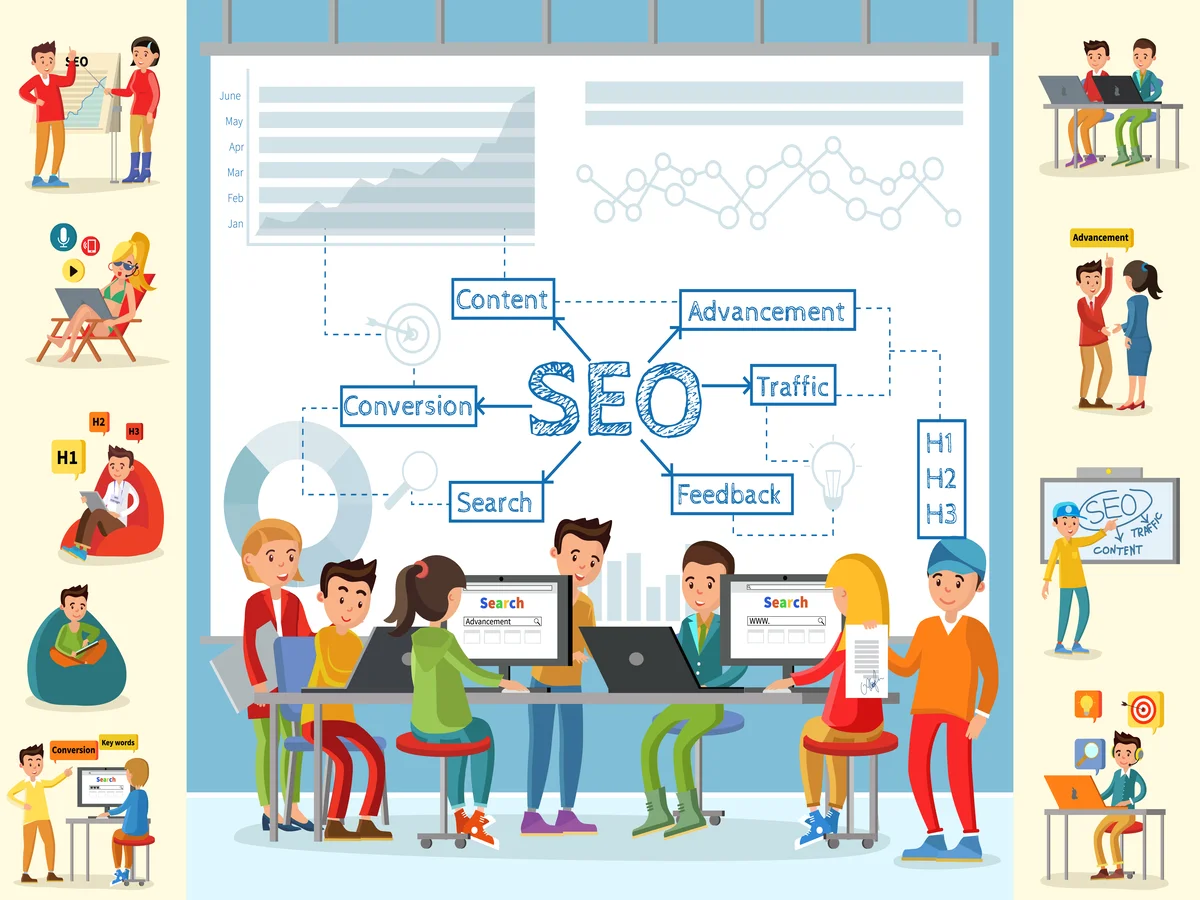SEO Beyond Data: Harnessing Design Thinking for Optimization Strategies

In the ever-evolving landscape of digital marketing, Search Engine Optimization (SEO) stands as a cornerstone for businesses striving to enhance their online visibility and drive organic traffic to their websites. Traditionally, SEO strategies have been heavily data-driven, focusing on keyword research, backlink analysis, and analytics metrics. While data undoubtedly plays a crucial role in optimizing website performance, there’s another dimension that is often overlooked: design thinking.
What Is Design Thinking in SEO?
Design thinking is a human-centered approach to innovation that emphasizes empathy, creativity, and iterative problem-solving. It involves understanding the needs and desires of users and using that insight to develop solutions that resonate with them. When applied to SEO, design thinking goes beyond mere data analysis and delves into the psychology of users, their behaviors, and their motivations.
Empathy Mapping for Audience Understanding
One of the fundamental principles of design thinking is empathy. To optimize a website for search engines effectively, it’s essential to understand the target audience deeply. Empathy mapping is a technique commonly used in design thinking to visualize and understand the thoughts, feelings, and motivations of users. By creating empathy maps for different user personas, SEO professionals can gain valuable insights into what drives their audience and tailor their optimization strategies accordingly.
Ideation and Content Creation
In traditional SEO practices, content creation often revolves around keyword research and search volume analysis. While keywords are still important, design thinking encourages a more creative approach to content ideation. Instead of solely focusing on keywords, SEO professionals can leverage design thinking principles to brainstorm innovative ideas that resonate with their audience on a deeper level.
By understanding the pain points, interests, and aspirations of their target audience, content creators can develop compelling narratives that not only attract search engine traffic but also engage and resonate with users on a personal level. This approach not only improves search rankings but also enhances user experience and brand perception.
Prototyping and User Experience Optimization
In design thinking, prototyping is a crucial step in the iterative process of innovation. Similarly, in SEO, optimizing user experience (UX) is an ongoing process that involves continuous testing and refinement. By creating prototypes of website layouts, navigation structures, and content formats, SEO professionals can gather feedback from users and identify areas for improvement.
User experience optimization goes beyond traditional SEO metrics like bounce rate and time on page. It’s about creating a seamless and intuitive browsing experience that keeps users engaged and encourages them to explore further. By applying design thinking principles to UX optimization, businesses can create websites that not only rank well on search engines but also delight and inspire their visitors.
Measuring Success Beyond Rankings
In traditional SEO, success is often measured in terms of search engine rankings and organic traffic metrics. While these are important indicators of performance, they only tell part of the story. Design thinking encourages a more holistic approach to measuring success, focusing on the impact on users and the achievement of business objectives.
Instead of solely relying on quantitative metrics, SEO professionals can use qualitative feedback and user testing to evaluate the effectiveness of their optimization strategies. By measuring factors such as user satisfaction, engagement, and conversion rates, businesses can gain a deeper understanding of the real-world impact of their SEO efforts and make data-driven decisions to drive continuous improvement.
In today’s competitive digital landscape, traditional SEO strategies alone are no longer sufficient to stay ahead of the curve. By embracing design thinking principles, businesses can develop more innovative and user-centric optimization strategies that not only improve search rankings but also enhance user experience and drive meaningful business results. By combining data-driven insights with empathy, creativity, and iterative experimentation, SEO professionals can unlock new opportunities for growth and differentiation in the ever-evolving world of digital marketing.
FAQs: SEO Beyond Data – Harnessing Design Thinking for Optimization Strategies
Design thinking is a human-centered approach to innovation that emphasizes empathy, creativity, and iterative problem-solving. In the context of SEO, design thinking goes beyond traditional data-driven strategies by focusing on understanding the needs and motivations of users to develop more impactful optimization strategies.
Empathy mapping is a technique used to visualize and understand the thoughts, feelings, and motivations of users. By creating empathy maps for different user personas, SEO professionals can gain valuable insights into what drives their audience and tailor their optimization strategies accordingly, leading to more effective targeting and engagement.
Ideation is essential in content creation for SEO because it encourages a more creative approach to developing content that resonates with users on a deeper level. By understanding the pain points, interests, and aspirations of their audience, content creators can develop compelling narratives that not only attract search engine traffic but also engage and resonate with users, ultimately improving search rankings and brand perception.
Prototyping is a crucial step in the iterative process of innovation, and it plays a similar role in user experience optimization (UX) for SEO. By creating prototypes of website layouts, navigation structures, and content formats, SEO professionals can gather feedback from users and identify areas for improvement, ultimately creating a seamless and intuitive browsing experience that keeps users engaged and encourages exploration.
While traditional metrics like search engine rankings and organic traffic are important indicators of SEO performance, success should also be measured in terms of user satisfaction, engagement, and conversion rates. By embracing design thinking principles and focusing on the impact on users and business objectives, SEO professionals can gain a deeper understanding of the real-world effectiveness of their optimization strategies and make data-driven decisions to drive continuous improvement.







